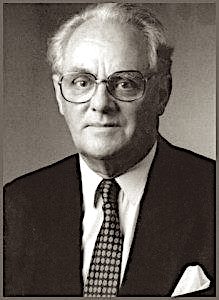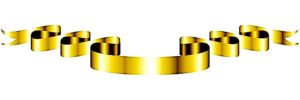22 May | Uncategorised | admin
Vitamin B-17 by Dr. Hans A. Nieper +
He published over 300 scientific
papers during his career.
1928 – 1998
Dr. Hans A. Nieper late of Germany
had this to say about:
Vitamin B–17:
.
In 1848, a substance was presented at
the Society for Medicine in Moscow,
which apparently had an obvious
effect on some forms of cancer.
. . . . . . .
While I was in Freiburg in 1951 for my
state examination as a physician, I had
to evaluate a patient with a stomach cancer.
One of the chief physicians in the group of medical examiners present recommended that this substance be tested on the patient. It was a bitter almond substance, one of the so-called beta-cyanogenic glucosides. There are a good 50 of them in nature, the best known being amygdalin, Vitamin B–17, Prunasin, cassavin and ficin.
.
Unfortunately, in the United States, the greatest and most depressing tragic comedy of modern medicine developed around these substances.
It would be inappropriate to go into the history of the so-called laetrile affair in the United States, although I am, of course, quite familiar with the details.
.
As an explosive internal issue, the laetrile affair has almost
attained the order of magnitude of the Vietnam conflict.
I still do not see how some of the exponents of official
American cancer medicine, and certain bureaucracies
in Washington, are going to emerge from
this affair with clean hands.
.
The effect of this bitter almond substance is not strong, and can be observed only if the defence mechanisms are in operation.
In any event, it can and was clearly proven both clinically and experimentally, with positive results, at both the famous Sloan-Kettering Institute in New York, and at the Pasteur Institute in Paris.
An enormous suppression story was leaked to the press by a member of the New York institute. A rather mysterious “testing” in five clinics, including the famous Mayo Clinic, led to the strong suspicion that certain oral (not intravenous) doses of laetrile were tested after having been previously and intentionally “contaminated” at the National Cancer Institute in Washington, with a certain highly poisonous cyano urea combination. Officially, a “purification” was admitted.
.
The ” dot on the i ” to the whole affair was supplied by the clever Japanese. Within the organism, the bitter almond substance ( Vitamin B–17, amygdalin, laetrile ) decomposes into cyanide, which is immediately detoxified, and [then] into benzaldehyde.
From an entirely different perspective, the Japanese found that benzaldehyde had a very positive effect against cancer cells, which additionally is very interesting from the point of view of its biochemical mechanism. The Japanese supplied ample basic information, and both the experimental and clinical results were quite remarkable. In 1980, an official journal of the National Cancer Institute of the United States reported, nicely wrapped up, on the excellent results obtained in Japan with benzaldehyde. The fact that this is the active principle in the infamous “laetrile” was presumably only noticed later. Once again, orthodoxy does have its element of stupidity.
.
The Point of this entire affair is not whether the preparation is particularly effective or not. It is a matter of scientific and moral integrity. Today benzaldehyde and mandelonitriles are important tools in the hands of tumour specialists, even though they do not perform miracles. Orthodox medicine, of course, has no such offerings.
Incidentally, during the degradation of the bitter almond substance by the organism, a second substance with a cancer inhibiting effect is formed, thiocyanate. Both chemically and in its action, it is related to allicin (from garlic) and allyl-isothiocyanate (from horseradish). Perhaps it is due to the relatively low cancer inhibiting Protective action of these substances that orthodox medicine does not offer them.
.
To complete the Picture, a technical paper originating at Columbia University in New York was published, reporting that the cyanide released by the bitter almond substance was transformed inside the cancerous cell into a metabolite that is specifically cancer inhibiting. The normal cell cannot accomplish this particular transformation. The attempt to use the deviant ionic balance of the cancer cell as a starting point for cancer therapy has been quite successful, and in a direction other than that of sodium elimination from the cancer cell through the already mentioned taurine. The cancer cell contains far more hydrogen ions than a normal cell. Therefore, its pH value is lower than that of normal cells. If one succeeded in removing the excessive hydrogen ions and thus raising the pH value, this might stop many of the metabolic processes sustaining the malignancy of the cancer cell. It would be like removing the spark plugs from the cancer cells. In fact, the long and highly respected American physicist and chemist, Keith Brewer, succeeded in translating this concept into a realistic treatment program.
.
The cancer cell takes in rubidium and especially cesium, both elements that, because of the special characteristics of their electron shells, absorb free hydrogen ions. Cesium is particularly effective.
For the rest of the organism, cesium is very harmless in the doses used in treatment, even following prolonged application.
Animal experiments and clinical results with this treatment, which only became known in the United States during the second half of 1981, are, in fact, remarkably good. Because of the nontoxic nature of the method, its effects on cancerous tumours in man are obviously better and more interesting than the effects of well-known toxic chemotherapy measures. Care must be taken, however, with this therapy of hydrogen ion neutralization in the tumour cell, to insure that the organism’s immune and detoxification systems are in full operation as much as possible.
In any event, this therapy is appropriate even when the
tumours already have considerable volume.
Results in Germany confirm those obtained in the United States.
Of course cesium therapy requires daily supplementation with potassium, and it belongs in the hands of well-trained specialists — as is often stressed in the USA.
.
The physicist and chemist Keith Brewer was a determining factor in implementing the isotope separation required for the manufacture of the American atomic bomb during World War II. It is understandable that this great accomplishment in the battle against cancer is psychologically very satisfying to him. It should not be necessary to mention that this important development is not an orthodox medicine offering either.
Quite the contrary, the famous physicist Brewer is snubbed by the orthodox American cancer establishment, despite his great accomplishments.
.
Even urea in the amount of 7–15 grams daily has obviously spectacular effects on certain forms of cancer — especially advanced cancer of the liver. Although in 1974 Dr. Danopuolos, Professor at the Greek Cancer Clinic discussed this in detail in the British magazine “Lancet” this path was not further pursued by orthodox medicine. This therapy is very inexpensive, mostly harmless and can be administered for a prolonged period. The underlying principle seems to be an antiviral effect. The effect of the urea therapy is limited to cancers, which are known to be started by the foregoing viral infections. This is true for liver cancers (hepatitis B) and for oral tumours (herpes virus).
A further method to detoxify the cancer cells from the inside consists of the introduction of L-glutathione, a compound with sulfureous amino acids. Known results up to now permit prediction of benefits from this treatment.
.
The insights gained, which encompass the already mentioned cancer retarding or cancer-preventing “supervisory” steroid, DHEA, [Dehydroepiandrosterone] are new and fascinating for expert and layman alike. About 60% of all people have enough of this substance in their blood to be sufficiently protected from the occurrence of cancer in their organism; although, as previously mentioned, some other factors, e.g., the blood type, complement levels and lymph-cell-bound tumosterone activity are additional contributors to the outcome. In the meantime, it has become possible to determine the level of DHEA in the bloodstream. If it is too low, it can be increased. The American company Searle produces DHEA synthetically. More elegant, possibly, is a method to turn on the DHEA production of the body itself. Apparently, this can be accomplished with a delay time of several weeks, by the already mentioned squalene. When the DHEA level in the (blood) serum rises to a value of more than 3.3 mg/L, even threatening cancer tumors go into remission, of course, only under the assumption that the complex chain of further defence mechanisms is still functional or is repaired. The DHEA has, to be precise, only a retarding effect on the metabolism of the cancer cell and the extracellular “little bodies” mentioned. Further work is up to the body’s own elimination system.
.
Certain observations suggest that the DHEA-Sulfate, which circulates with the blood, must first be de-sulfateded by a special factor so that it can become effective against cancer cells. This de-sulfateded factor originates possibly from the pineal gland, a brain appendix, and/or from the thymus gland.
.
About 40% of the people probably have absolutely or relatively too little DHEA in their blood. A little less than half of these develop a latent cancer which, however, during their lifetime will not reach the importance of a manifest illness. About 22% of all people die from a manifest cancerous illness. The deficiency of DHEA, and an increased deficiency due to the onset of cancer, are correlated with interesting peculiarities of the personality. Such people are, as a rule, not very aggressive, yes, decidedly “dear.” They are mostly somewhat depressed, or at least somewhat inactive. And above all, they frequently suffer from “weak decision making ability”, especially in the realm of business.
.
The extreme opposite of weak decision making ability is not decision
making strength, as would seem to be the case. It is recklessness.
I wish to present still one more comment: In my total experience of observing several thousand-cancer patients, only two cases became known to me, which manifested criminal potential. On the other hand, no doubt, recklessness goes hand in hand with criminal activity.
Will it some day be possible to eliminate the criminal potential in afflicted persons by the manipulation of steroids (like DHEA) within them?
This would be only too good, and it would fit so perfectly into the new and hopeful Tachyon Age.
I am quite confident that it is possible to bring this disease under control, something that to date, unfortunately, has not been the case.
It is important to start protective therapy immediately after a tumour operation, for an indefinite period of time, even if at first no further is evident. This protective therapy should be based partially on the aforementioned considerations. Naturally orthodox medicine as a rule does not offer such proposals and, to the contrary, frequently misinforms patients when these questions arise.” …
.
… “The clinic for tumour research in Essen, Germany, considered quite orthodox, implies that continued chemotherapy, because of its toxic effect, can damage the body’s own immune surveillance system. “Therapeutic measures such as chemotherapy and irradiation impair certain cellular functions that are decisive for defence against tumours. This fact should be considered in the therapy concept.” …
.
.
“Dr. Nieper’s Revolution in Technology, Medicine and Society”
ISBN 3-925188-07-X
© M.I.T. Management Interessengemeinschaft für Tachyonen-Feld-Energie GmbH
Friedrich-Rüder-Straße 1, 2900 Oldenburg, Federal Republic of Germany
First German printing — February 1981
English — May 1985
. . . . . . .
Dr. Hans Alfred Nieper, late of Hannover, Germany, was an oncologist consulted by prominent persons including Red Buttons, Yul Brynner and Ronald Reagan. He was president of the German Society of Oncology.
Dr. Nieper was outspoken against fluoridation, as witnessed in his book “Revolution in Medizin und Gesundheit.“ [Click on English ]
His last work was a German translation, with commentary, of Ralph Moss’ “Questioning Chemotherapy.”
. . . . . . .
“We have been subject to a concentrated disinformation campaign in the form of a seductively simple ‘no lead, no worries’ message.
Fluorosilicate is the same as powdered Silicofluoride.
In Australia, by law only 3 chemicals are allowed for water fluoridation. One liquid, hydrofluorosilicic acid (HFSA), with a formula of H2SiF6.
Two are powdered, Sodium Fluoride (NaF) and Sodium Fluorosilicate (NaSiF6), which is a silicofluoride, as it has silicon in the formula..
NB, silicofluorides can leach lead from any brass fittings in domestic plumbing and also Council water assets.
There are now official recommendations to lower the lead content in Australian plumbing fixtures by 2025.
During the transition period between 1 September 2022 and 1 September 2025 plumbing practitioners may continue to install existing products as well as those with a reduced level of lead, providing the products are all certified in accordance with the WaterMark Certification Scheme. However, from 1 September 2025 only products that are compliant with the lead requirements of the NCC will be authorised for use.”
This is in place after a report put out by the Macquarie University, about lead leaching into drinking water.
The report never mentions silicofluorides, but in the references there are 2 studies linking lead leaching to silicofluorides.
The ABCB commissioned Macquarie University in 2018 to undertake a literature review to determine to what extent plumbing products may contribute to lead levels in drinking water in excess of those permitted by the Australian Drinking Water Quality Guidelines.
Macquarie University’s Lead in Plumbing Products and Materials Report (the Report) confirmed that, although Australia’s drinking water is of a high quality and meets the Australian Drinking Water Quality Guidelines, there is potential for lead to leach from copper alloy plumbing products in contact with drinking water.
In response to the Report’s findings, the ABCB released a Regulation Impact Statement (RIS) for public consultation.
The RIS analysed whether the allowable lead content in plumbing products should be reduced, and assessed alternatives to address the issue. The Decision RIS was used to assist the ABCB in deciding to reduce the allowable level of lead in certain plumbing products.”
On Mon, Feb 27, 2023 at 8:25 PM Jeanie Zonta <jeaniezonta@gmail.com> wrote:
. . . . . . .
Hi Colin, Just checking on flyer 1 with the type of Fluoride used in Townsville’s water.
Is Sodium Florosilicate the same as powdered Silicofluoride?
Please note I have Ccd Peters address in this message if you can include him in correspondence as well.
Kind Regards
Jeanie
. . . . . . .
.
Some facts and estimates for Townsville.
From FAQs on water quality in Townsville’s Council website.
https://www.townsville.qld.gov.au/__data/assets/pdf_file/0018/9315/Water-Quality_Frequently-Asked-Questions_14032016.pdf
“Fluoridation was commenced in Townsville in 1964 after petitions were filed with the Council by persons supporting fluoridation.”
Townsville’s Councillors have failed to consult the people of Townsville, on adding the enzyme poison fluoride since 1964.
The people of Townsville have never been individually asked to consent to this mandatory toxic dental service.
Nowhere on the Council website do they tell the people that since 2012 the Councillors are liable and responsible for the fluoridation decision.
Actually the councillors were liable from 1964 to 2008 also, as from 2008 to 2012 it was a State Govt mandate.
Now it is a Council medical mandate.
The ADWG on Consultation, says the consumer is the ultimate judge on water quality and must have a willingness to pay for it.
So, the Federal Health Dept is saying if you judge that fluoridated water is not for you, then do not pay for it.
Then the prescribing Councillors should pay your water bills?
1.4 Community consultation
The Guidelines are intended to provide consumers with safe and aesthetically pleasing water, and ultimately it is consumers who will be the final judges of water quality.
It is vitally important that consumers are viewed as active partners in making decisions about drinking water quality and the levels of service to be adopted. Community expectations and willingness to pay must be considered. It is the responsibility of drinking water suppliers to keep the community fully informed about water quality, existing problems and needs for improvement.
Consumers also need to be informed about their responsibilities in relation to domestic plumbing and of any possible issues associated with the interaction of mains water with this plumbing.
Australian Drinking Water Guidelines Version 3.6 – Page 7
Fluoridating all of Townsville’s water is a waste of toxic waste fluoride.
From their own data given to the BOM benchmarking database.
Total water treated is about 45 billion litres. For about 193,000 people.
About 9% is non-revenue water, with 2 thirds of that from leaks and main bursts.
Only about 63% of the water goes to residential customers.
Only about 1% of the residential water will touch a tooth.
A total nonsense.
The estimated amount of Chinese toxic waste contaminated chemicals used per year is about 20 tonnes.
Cost estimates?
If compared to SE QLD
Total costs could be $20 per million litres per year.
or about $900,000 per year.
But only about $3,000 would be needed for 2 litres per person per year.
$900,000 for 193,000 people is about $4.66 per person, or about 3 tubes of Coles $1.50 toothpaste per year.
Cost of possible corrosion to public and domestic assets is a risk.
Soft water adds to a greater risk of corrosion.
“Typically Townsville has soft to moderately soft water, depending upon distance travelled by the water through pipes.”
Dental fluorosis can also add to costs, not to mention all other health costs,
ENVIRONMENTAL CONCERNS.
For 193,000 people to drink 2 litres per day of fluoridated water, it amounts to about 141 million litres per year.
But the Council fluoridates 45,537 million litres per year.
Or 99.7% is “wasted”.
But most of this Chinese toxic waste goes into the environment every year.
Estimated at about 600 tonnes over 58 years.
Not very GREEN.
.





